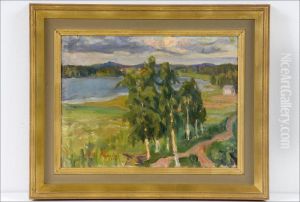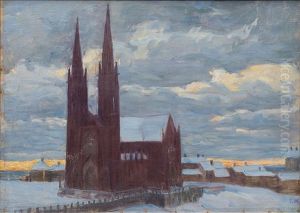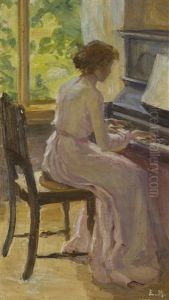Ebba Masalin Paintings
Ebba Masalin was a Finnish artist known for her work in painting and printmaking, particularly in the early to mid-20th century. Born on November 15, 1894, in Helsinki, Finland, she was part of a generation of artists that contributed to the vibrant cultural scene in Finland during a period of national awakening and identity formation. Masalin's artistic journey began in an era when Finland was striving for independence from Russia, which it eventually achieved in 1917.
Educated at the Central School of Arts and Crafts in Helsinki, Masalin honed her skills in various mediums but showed a particular affinity for watercolors and graphic arts. Her early work often depicted Finnish landscapes and nature, a common theme that resonated with the Finnish people's deep connection to their natural surroundings. She was also known for her portraiture and floral compositions, which were rendered with delicate attention to detail and color.
Throughout her career, Ebba Masalin was active in the Finnish art community. She was a member of various art organizations and participated in numerous exhibitions. Her work was recognized and appreciated in Finland, and she also gained some international exposure, although she remained relatively unknown outside her home country compared to some of her contemporaries.
Masalin's artistic output is characterized by its lyricism and often reflects the influence of national romanticism, which was prevalent in Finnish art during her time. Despite the changing trends in art throughout her life, she maintained a consistent personal style that celebrated beauty and serenity.
The latter part of Ebba Masalin's life saw her continue to create art, though with the advent of modernism and abstract art, her traditional style became less prominent in the Finnish art scene. Nonetheless, she left behind a body of work that captures the spirit of her time and the essence of Finnish cultural heritage.
Ebba Masalin passed away on March 12, 1984, in Helsinki. Although not as widely recognized internationally as some of her peers, Masalin's contributions to Finnish art have been preserved and celebrated posthumously, with her works held in several Finnish museums and private collections. Her legacy endures as a testament to the rich artistic traditions of Finland during the early 20th century.


